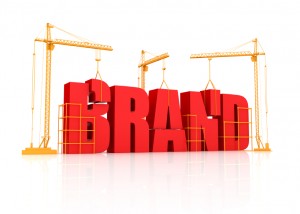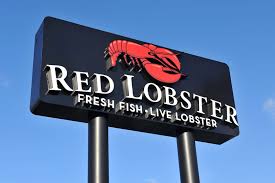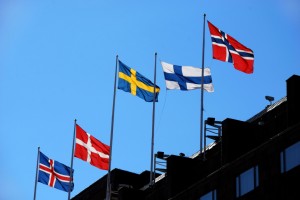Chief Stereotyping Officer

A manufactured stereotype.
Though I didn’t hold this title at my last job, I was effectively the Chief Stereotyping Officer. My job was to create stereotypes about our company and about our competitors. Like all stereotypes, the ones I created served mainly to simplify reality. Reality is complex. I wanted to simplify beliefs, values, and choices. And I wanted to tilt the scales in our favor.
My real title, of course, was Chief Marketing Officer. I created brands. And brands are nothing more than manufactured stereotypes.
The word “stereotype” has acquired negative connotations over the years. We admonish people not to stereotype. But the propensity to stereotype is innate. I call it a factory-installed bias.
In truth, we all stereotype. And we do it for very good reasons. Primarily, we stereotype to simplify the world around us. If one Volvo is safe, we may be justified in assuming that all Volvos are safe. If we had to test every Volvo to determine if it were safe or not, we might never reach a decision.
To stereotype simply means that we examine one item in a category – or one individual in a group – and reach conclusions about it. We then project those conclusions on to all members of the group.
We do this instinctively. It’s merely a simplifying assumption. And in many cases, we’re right. Most Volvos probably are safe. And that’s the purpose of branding – to convince you that all products from a particular company have common characteristics.
While the propensity to stereotype is innate, what we stereotype is based on culture and experience. Stereotypes become pernicious when they’re about people. When we stereotype gender, it becomes sexism. When we stereotype race or ethnicity, it becomes racism or ethnic prejudice. When we stereotype religions, it can lead to apocalyptic religious wars.
Stereotypes can also change over time. When I was a kid, products that were labeled “Made In Japan” were assumed to be poor quality. Now the opposite is true. Similarly, when I was young, people talked about “women drivers” as if they all behaved the same way. I don’t hear that kind of talk today so perhaps this is a stereotype that has disappeared.
Of course, most branding campaigns are not about people but about products or services. We marketers are simply taking advantage of an innate human behavior. People want to generalize about their experiences. We’d like to help you do that. We simply want to steer those generalizations in a particular direction.
People sometimes suggest that stereotyping is the sign of a lazy mind. Actually, it’s the sign a human mind. We should recognize that it’s part of who we are. At the same time, we should recognize that stereotyping people is degrading, erroneous, and just plain wrong.
Branding works because it aims directly at human nature. It’s a form of stereotyping that benefits both consumers and vendors. For consumers, it simplifies choices. For vendors, it creates strong reputations. So, let’s use stereotyping for what it’s good for and not for what it’s bad for. And, if you need a Chief Stereotyping Officer, I’m your man.
Neurobranding – 1

Why did I buy it? Who knows?
I wrote recently about the unsettling experience of forgetting my PIN while at an ATM at the Denver airport. My mind went blank; for the life of me, I couldn’t remember the number.
As I walked away from the machine, the number popped into my head: 2061. I was sure it was the right number, so I returned to the machine and entered it. Wrong. I transposed some of the digits. Wrong again. Finally, I gave up. As I walked away again, I noticed that I was standing by a door with a number on it: 2061.
My System 1 had noticed the number but didn’t bother to send it to System 2. But when my System 2 broadcast an emergency message, looking for a four-digit number, System 1 offered up the most recent one it had seen. The number just popped into my head. (For more on Systems 1 and 2, click here).
To recap: information entered my brain via System 1 without my being consciously aware of it and I took action based on it.
So here’s a question: could advertisers use similar techniques to plant information in my brain without my knowing it and induce me to take action on it … by buying something?
The short answer: of course they could. In fact, they probably already have. That, at least, is the theory put forth by Peter Steidl in his book, Neurobranding.
Steidl starts by considering what he calls the habitual brain (System 1) and the considering brain (System 2). System 1 makes the vast majority of our decisions – and does so on its own without bothering to send a memo to our conscious self (System 2). Steidl points out that System 1 make a vast majority of our purchase decisions as well.
Broadly speaking, System 1 works by comparing new events to past memories. If a new event corresponds to a happy memory, then we’ll probably feel happy, even if we don’t consciously understand why. If the event evokes scary memories, then we become wary. Did you ever have an uneasy feeling about something? Your System 1 is trying to tell you something. It’s not a bad idea to pay attention.
Steidl also points out that the purpose of branding is to create memories. In fact, it’s a three-step process. First, we create a memory. If we can create a memory that corresponds to a happy memory already stored in the habitual brain, so much the better. Second, we shape the memory, using a variety of signs and symbols. Finally, we activate the memory to keep it from fading away.
All this can happen blow the level of consciousness. Indeed, Steidl argues that most consumers really don’t know why they buy most products. If you ask them, they’ll make up an answer in a process known as confabulation. A confabulated answer has nothing to do with reality, which is why market research is so often wrong. You ask a consumer a question. The consumer confabulates. You believe her. You’re in big trouble.
If all this happens below the threshold of consciousness, why do we bother with awareness research? Steidl argues that awareness and attribute research are essentially useless. Consumers may be aware of many brands but they’re not aware that they’re aware.
Let’s go back to the ATM example – and assume that you interview me before I realized where the number 2061 came from. If you had asked me, “What’s the number on the door you’re standing by?”, I would have answered, “I have no earthly idea.” I didn’t know that my System 1 had picked up the number. I didn’t know that I knew.
So, how do you plant memories in someone’s System 1? It’s not easy but it can be done. I’ll return to this in an upcoming article.
Revitalizing A Brand: Red Lobster

Mmmmm … pork chops.
I read the other day that the Red Lobster chain of seafood restaurants is going to revamp its menu to add more seafood. Since the brand is known for seafood, it seems like a good idea. The question is, why did they ever shift away from seafood in the first place?
Red Lobster is a seafood-themed, family-oriented brand that offers good value for the money. You won’t get world-class food there but, as one of my students points out, it’s a great place to take the kids on a Saturday afternoon.
Unfortunately, the brand’s sales have been in a bit of a tailspin for a few years. Even more unfortunately, the company’s managers made a classic branding mistake. Instead of trying to shore up vulnerable customers and recapture lost customers, Red Lobster aimed to attract new customers.
To attract new customers, the chain introduced new, non-seafood menu items, like pork chops and tortilla soup. Seafood, as a portion of the total menu, dropped to 75%. Using a more diverse menu, the brand hoped to attract more diverse customers in larger numbers.
It didn’t work. After all, the Red Lobster brand stands for seafood. I doubt that many people said, “Honey, I’m in the mood for pork chops. Let’s go to Red Lobster.” You just wouldn’t think of pork chops and Red Lobster in the same sentence.
How do I know that this is a classic branding mistake? Because Kevin Lane Keller says so. It’s right there on page 469 of his textbook, Strategic Brand Management:
“In an attempt to turn sales around, some firms mistakenly focus on … chasing after new customers. This is the riskiest option. If it fails, two bad things can happen: the firm may fail to attract any new customers, but even worse, it may lose existing ones.”
I suspect that this is also what happened at JC Penney. The company had always been a middle-class haven, with mid-tier products and revenue driven by sales promotions. The brand hired Ron Johnson – fresh from his success at building Apple’s retail empire – to attract a cool new clientele. The effort failed. Just as Keller suggests, the brand revamp wasn’t enough to attract new customers but was more than enough to alienate traditional customers.
Red Lobster seems to be getting back on track. Their CEO, Salli Setta, says, “”At the end of the day, we believe that seafood is really why people come to Red Lobster.” Seafood accounts for 85% of the new menu. The company has also changed the way it prepares and plates its food and the way the menu is organized and presented.
I hope that Red Lobster recovers its past glories. It’s a good brand. In the meantime, I have a simple piece of advice for any brand whose fortunes are flagging. If you want to avoid a multimillion-dollar branding mistake, just read Kevin Keller’s textbook.
Baseball, Big Data, and Brand Loyalty

My hero.
I started smoking in high school but didn’t settle on “my” brand until I got to college. My Dad smoked Camels for most of his life but I decided that was not the brand for me. (Cough, hack!) Ultimately, I settled on Marlboros.
How I made that decision is still a mystery to me. In its very earliest days, Marlboro was positioned as a “woman’s brand” with slogans like “Ivory tips protect the lips” and “Mild as May”. That didn’t work very well, so the brand changed its positioning to highlight rugged cowboys in the American west. The brand took off and along the way I got hooked.
Though I don’t know why I chose Marlboros, I do know that it was a firm decision. I smoked for roughly 20 years and I always chose Marlboro. This is why brand owners focus so much attention on the 18-to-24 year-old segment. Brand preferences established in those formative years tend to last a lifetime.
But brand preferences often form quite a bit earlier. Brand owners may actually be late to the party. For example, I chose my baseball team preferences when I was much younger.
I played Little League baseball and was crazy about the sport. In our league, the teams were named after big league teams. Even though we lived in Baltimore, I played shortstop and second base for the Chicago White Sox. (The book on me: good glove/no bat).
At the time, Luis Aparicio and Nellie Fox played shortstop and second base for the real Chicago White Sox. They were my heroes. I knew everything about them, including the fact that they both weighed about 150 pounds in the pre-steroid era. I formed an emotional connection with the White Sox at the age of 10 or 11 and I still follow them.
My brand loyalty even rubbed off on the “other” team in Chicago, the Cubbies. Their shortstop was the incomparable Ernie Banks. I had heard of the Holy Trinity and I assumed that it was composed of Luis, Nellie, and Ernie.
I thought about all this when I opened the New York Times this morning and read about the nexus of Big Data, Big League Baseball, and Brand Development. Seth Stephens-Davidowitz has used big data to probe fan loyalty to various major league teams. (Unfortunately, he omits the White Sox).
Among other things, Stephens-Davidowitz looks at fans’ birth years and finds some interesting anomalies. For instance, an unusually large number of New York Mets fans were born in 1961 and 1978. Why would that be? Probably because boys born in those years were eight years old when the Mets won their two World Series championships. Impressionable eight-year-old boys formed emotional attachments that last a lifetime.
How much is World Series championship worth? Most brand valuations focus on how a championship affects seat, television, and auxiliary revenues. Stephens-Davidowitz argues that this approach fundamentally undervalues the brand because it omits the value of lifetime brand loyalty. When he recalculates the value with brand loyalty factored in, he concludes that “A championship season … is at least twice as valuable as we previously thought.”
What’s a brand worth? As I’ve noted elsewhere, it’s hard to measure precisely. But we form emotional attachments at very early ages and they last a very long time. As Stephens-Davidowitz concludes, “…data analysis makes it clear that fandom is highly influenced by events in our childhood. If something captures us in our formative years, it often has us hooked for life.”
Happiness, Brand, and Innovation

World leaders.
Are Finland, Sweden, and Switzerland the three best countries in the world? You might think so based on the latest rounds of research.
In the past, I’ve reported on the World Happiness Report (WHR) and the Global Innovation Index (GII). Both studies are produced regularly and measure a country’s ability to promote specific outcomes. The WHR measures how happy a country’s citizens are and why. The GII measures how effectively a country promotes and protects innovation, especially in regards to scientific and technical innovation.
In a previous article, I compared happiness and innovation. There seems to be a connection, though it’s difficult to say whether happiness promotes innovation or vice versa. Or perhaps some hidden, third variable promotes both. (By the way, I’ve also written about how happiness is measured).
This year, in addition to the updated versions of WHR and GII, I’ve added another — FutureBrand’s Country Brand Index (CBI) — that measures the strength of a country’s brand. Now in its eighth edition, CBI asks citizens of many countries to judge the most attractive countries to produce “future-positive predictions”. WHR and GII aim to measure the actual phenomenon — either happiness or innovation. CBI measures perceptions; how is a country perceived by citizens of other countries.
Putting together the three studies reveals a great deal of overlap. In the table below, I’ve listed the top ten countries in each report. Countries that make the top ten in all three studies are in red. Countries that reach the top ten in two studies are in blue. Countries that make the list in one study are in purple.
Switzerland is ranked number one in the CBI and GII studies and number three in the WHR study. It’s happy and innovative and has a positive reputation.
All of the Nordic countries — Denmark, Finland, Iceland, Norway, and Sweden — make at least one of the top ten lists. Sweden and Finland make all three. Denmark and Norway make two. Tiny Iceland makes one.
The USA makes the top ten in brand and innovation but ranks only 17th in happiness.
The lists are dominated by European Protestant countries or their offspring. Asia is represented by only three countries — Hong Kong, Japan, and Singapore. African and Latin American countries don’t make any of the top ten lists. The degree of overlap makes me wonder exactly what we’re measuring in these studies. It could be that happiness, innovation, and brand power are intimately related and that these studies measure the strength of the relationship. On the other hand, this could be an example of cultural bias. Or it could be a halo effect. Countries that are successful in one area may be viewed as successful in other areas as well. Of course, the reverse may also be true.
I plan to delve into each of these studies more closely in the future. In the meantime, please review the table below and help me sort out the relationship between the variables and the countries. What causes what?
| WHR 2013 | CBI 2013 | GII 2013 | ||
| 1 | Denmark | Switzerland | Switzerland | |
| 2 | Norway | Canada | Sweden | |
| 3 | Switzerland | Japan | UK | |
| 4 | Netherlands | Sweden | Netherlands | |
| 5 | Sweden | New Zealand | USA | |
| 6 | Canada | Australia | Finland | |
| 7 | Finland | Germany | Hong Kong | |
| 8 | Austria | USA | Singapore | |
| 9 | Iceland | Finland | Denmark | |
| 10 | Australia | Norway | Ireland |